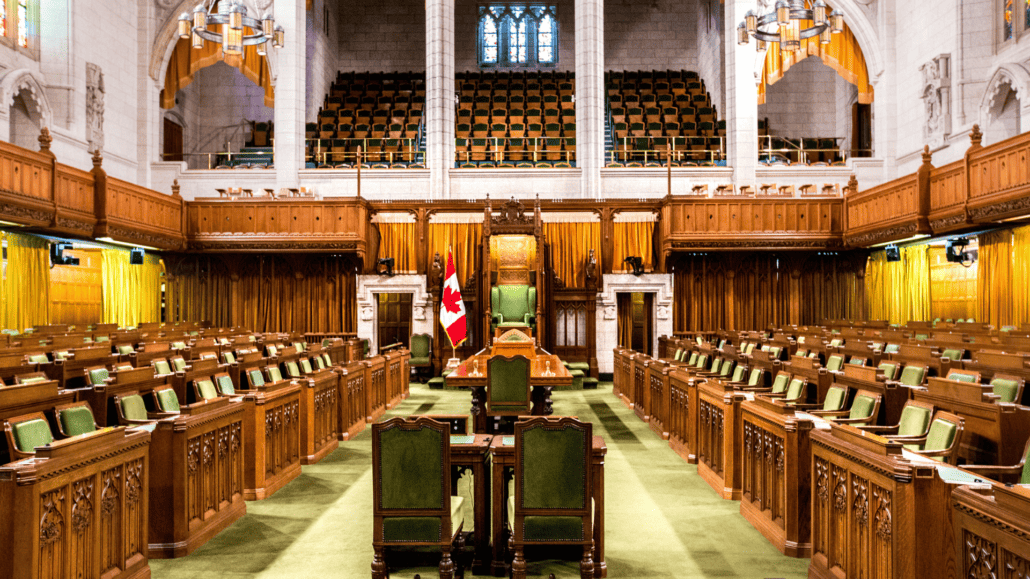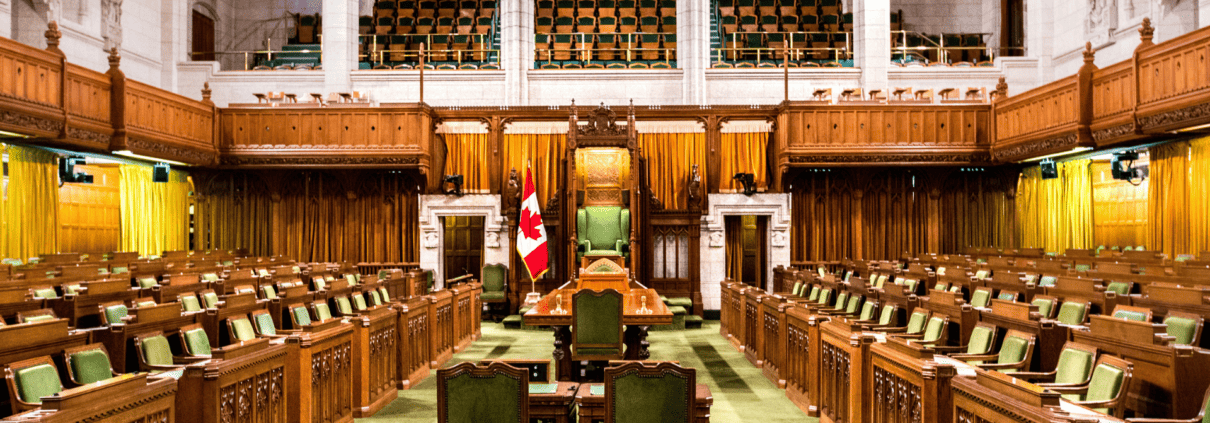The 2023 federal budget: Increased deficits, new green incentives and higher taxes

The 2023 federal budget was widely projected to be one of balance and reaction: specifically, it would walk a tightrope aimed at keeping inflation under control and preparing for a potential economic downturn ahead. It would respond to the Biden Administration’s sweeping Inflation Reduction Act by offering competitive green innovation and business incentives, all to keep pace with the hundreds of billions of dollars in funding being pumped into the U.S. economy to promote clean energy and domestic energy production. It may have achieved the latter, but in doing so surrendered all hope of balancing the books any time in the near future.
In fact, the 2023 federal budget projects soaring deficits thanks to higher spending and a significantly dimmer fiscal outlook than was projected in the 2022 budget. Now, Ottawa is forecasting a deficit of $43 billion in 2022-23 and $40 billion in 2023-24 (the fall economic update had forecast a deficit of $30.6 billion for this fiscal year), declining to $15.8 billion in 2026-27 and then $14 billion in 2027-28—the year the government had only recently projected a return to surplus. Lower projected GDP growth has forced a downward revision to annual revenue projections by $5.7 billion on average, while income tax revenue is expected to be $4.8 billion lower on average over the next six years.
Lest anyone question Ottawa’s fiscal prudence, Finance Minister Chrystia Freeland announced that the federal government will find savings of about $7.1 billion over five years by cutting expenditures on everything from travel and professional services to consulting fees. Departmental spending would also be cut by about $7 billion over four years and $2.4 billion per year thereafter. But what if those savings don’t materialize, or the descent into a downturn is swifter than expected? In that case, all bets are off and the government’s fiscal projections will need to be revised, yet again.
Higher taxes to come
While Budget 2022 left personal and corporate tax rates untouched, the 2023 federal budget proposes significant changes that will impact entrepreneurs.
First, it proposes amending the Alternative Minimum Tax for High-Income Individuals. For taxation years beginning after 2023, the AMT rate would increase to 20.5 per cent from 15 per cent, the AMT exemption would climb from $40,000 to the start of the fourth federal tax bracket (approximately $173,000 for the 2024 tax year), while the AMT capital gains inclusion rate would jump to 100 per cent from 80 per cent, with capital loss carry forwards and allowable business investment losses applying at a 50 per cent rate. In addition, 100 per cent of the benefit associated with employee stock options would be included in the AMT base rate.
The AMT tightening doesn’t end there. The government is proposing to ‘… include 30 per cent of capital gains on donations of publicly listed securities in the AMT base.’ The AMT base would also be broadened by disallowing 50 per cent of the deductions in areas ranging from employment and childcare expenses to the deduction for limited partnership losses and non-capital loss carryovers. Lastly, the budget proposes that only 50 per cent of non-refundable tax credits be eligible for credit against the AMT, the exceptions being the Special Foreign Tax Credit, the Political Contribution Tax Credit, the Labour Sponsored Venture Capital Corporations Credit and the non-refundable portion of investment tax credits.
The government says that 99 per cent of the AMT increases paid by individual Canadians would be covered by those earning more than $300,000 per year, with 80 per cent of the total AMT paid by those earning more than $1 million per year. In other words, the measure will have a significant impact on successful business owners and professionals.
Other noteworthy, proposed tax changes include:
- A promise to release draft legislative proposals around the tightening of General Anti-Avoidance Rules (GAAR), which are designed to avoid abusive tax avoidance transactions. The changes would include the addition of a preamble to ensure the GAAR applies as intended, a change to the avoidance transaction standard, the introduction of a new economic substance rule, a penalty ‘for transactions subject to the GAAR, equal to 25 per cent of the amount of the tax benefit,’ along with an extension of the reassessment period
- The application of the proposed two per cent tax on share buybacks—which would take effect on January 1st, 2024—and apply to ‘the annual net value of repurchases of equity by public corporations and certain publicly traded trusts and partnerships in Canada.’ A business would not be subject to the tax in a year if its gross repurchases of equity were less than $1 million
- An amendment to the Income Tax Act to treat dividends on Canadian shares held by financial institutions as business income
- A doubling of the maximum employment deduction for tradespeople’s tools to $1,000 from $500, beginning in 2023
Proposed budget measures for business
With the U.S. Inflation Reduction Act in its sights, the Trudeau government was clearly eager to introduce tax incentives to keep businesses competitive and drive innovation North of the Border. Some of the most important business-related proposals contained in federal budget 2023 include:
- A 15 per cent refundable Clean Electricity Investment Tax Credit for eligible investments in a range of environmentally friendly electricity generation and storage systems, along with transmission equipment. The measure is expected to cost ‘… $6.3 billion over four years starting in 2024-25, and an additional $19.4 billion from 2028-29 to 2034-35’
- Investments of at least $20 billion by the Canada Infrastructure Bank to help fund clean electricity and growth infrastructure projects
- $3 billion over 13 years to fund a series of ongoing programs including the Smart Renewables and Electrification Pathways Program, the Smart Grid program and to support initiatives related to offshore wind power generation
- A refundable tax credit equal to 30 per cent of the cost of investments in mining equipment and machinery used to process clean technologies or extract critical minerals
- A new Clean Hydrogen Investment Tax Credit offering support of between 15 and 40 per cent of eligible hydrogen-related project costs, and a 15 per cent tax credit on equipment to convert hydrogen into ammonia
- $500 million over 10 years for the Strategic Innovation Fund in support of clean technology development
- An expansion of the Clean Technology Investment Tax Credit ‘to include geothermal energy systems that are eligible for capital cost allowance Classes 43.1 and 43.2’ and a proposal to modify the phase-out of the Clean Technology Investment Tax Credit
- Enhancements to the Carbon Capture, Utilization, and Storage Investment Tax Credit that would expand eligibility for the credit to include dual use heat or power equipment and water use equipment
- As-yet unspecified tax changes to facilitate the creation of Employee Ownership Trusts
- An additional $625 million in 2023-24 to fund Labour Market Transfer Agreements
- $197.7 million in funding in 2024-25 for the Student Work Placement Program
- $108.6 million over three years to expand the College and Community Innovation Program
- $368.4 million over three years for forest sector support
- $2.3 billion over 14 years for the Canadian Space Agency to fund International Space Station participation and the development of new lunar vehicles
Proposed measures related to affordability, education, healthcare and other items
In analyzing the budget, it’s important to remember that the Trudeau Liberals are still in a minority situation. The Grit-NDP Supply and Confidence Agreement means that the ruling party is essentially bound to compromise in order to stay in power. Major investments in dental care and affordability measures underscore that point. Here are some of the most significant measures for individual Canadians in the 2023 federal budget:
- $13 billion over five years and $4.4 billion ongoing to implement the Canadian Dental Care Plan. The program will provide dental coverage for uninsured Canadians with annual family income of less than $90,000, with no co-payments for those with family incomes of less than $70,000
- $359.2 million over five years for a renewed Canadian Drugs and Substances Strategy
- $250 million over three years to establish an Oral Health Access Fund
- A one-time grocery rebate to help Canadians cope with food-related inflation. Eligible Canadians would receive $153 per adult, $81 per child and $81 for recipients of the single supplement
- A promise to work with the provinces to crack down on so-called ‘junk fees’ in areas such as telecom roaming charges, excess baggage and event ticket fees
- A crackdown on predatory lending fees, including a cap on payday lending fees at no more than $14 per $100 borrowed, and a proposal to amend the Criminal Code to lower the criminal rate of interest from the current 47 per cent APR to 35 per cent APR
- A commitment from major credit card firms to reduce fees for small businesses. The government says the majority of ‘credit card-accepting businesses will see their interchange fees reduced by up to 27 per cent from the existing weighted average rate’
- A commitment to introduce a ‘right to repair’ applying to items such as appliances and electronics
- $813.6 million in 2023-24 to enhance student financial assistance for the school year starting August 1st, 2023, including increasing Canada Student Grants by 40 per cent (up to $4,200 for full-time students), increasing the interest-free Canada Student Loan limit from $210 to $300 per week of study and waiving the requirement for mature students to undergo credit screening for federal student grants and loans
- Increasing limits on certain RESP withdrawals to $8,000 from $5,000 for full-time students, and to $4,000 from $2,500 for part-time students, while allowing divorced parents to open a joint RESP for their children
- $4 billion over four years to develop an urban, rural and Northern Indigenous Housing Strategy
- News that financial institutions can offer the new Tax-Free First Home Savings Account on April 1st, 2023
- Proposed amendments to ensure adequate compensation for airline passengers impacted by flight delays or cancellations, along with $1.8 billion over five years to enhance airport security
- $156.7 million over five years to reduce service wait times for veterans
- $123.9 million over seven years to modernize Old Age Security IT infrastructure
- $2.8 billion as part of the Band Class settlement for a trust in support of indigenous activities and initiatives
- More than $1 billion over five years to fund federal initiatives under the Action Plan for Official Languages
- An additional loan of $2.4 billion to Ukraine for 2023
The 2023 federal budget is replete with measures intended to boost the development of sustainable energy and production technologies. In fact, it may offer more to enhance Canadian innovation and competitiveness than any federal budget in recent memory. But with an economic storm likely gathering and spending on the rise, the government will have little flexibility if even a mild recession takes hold.
Significant tax hikes aimed at wealthier Canadians and, indirectly, many entrepreneurs, mean that the burden of covering the costs of these new expenditures will fall on the very Canadians who actually drive innovation and economic growth. Consider this a budget that pulls the country in multiple fiscal directions—some of them far off course.
Armando Iannuzzi, Co-Managing Partner
For more information on how the federal budget impacts you or your business, contact a member of our team.


